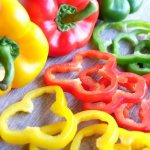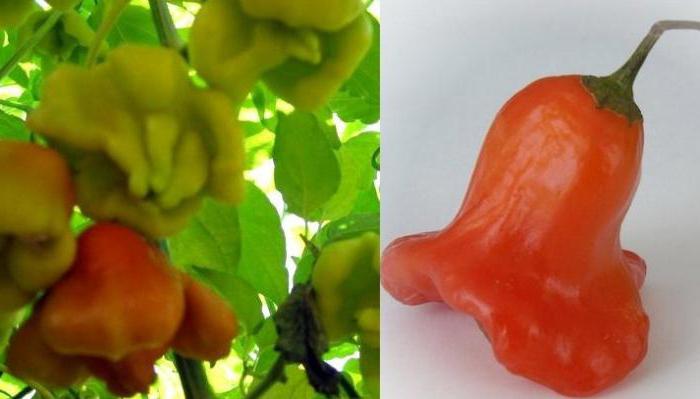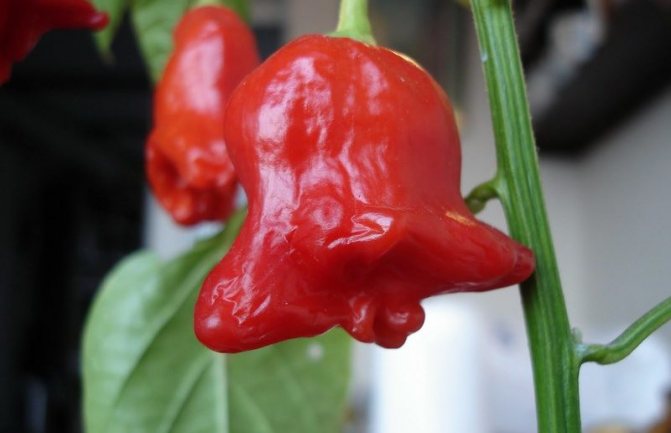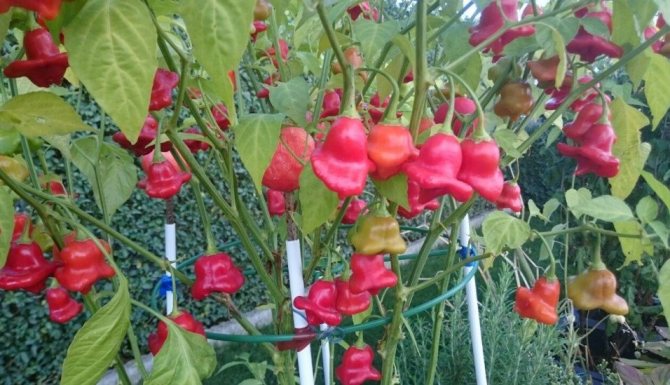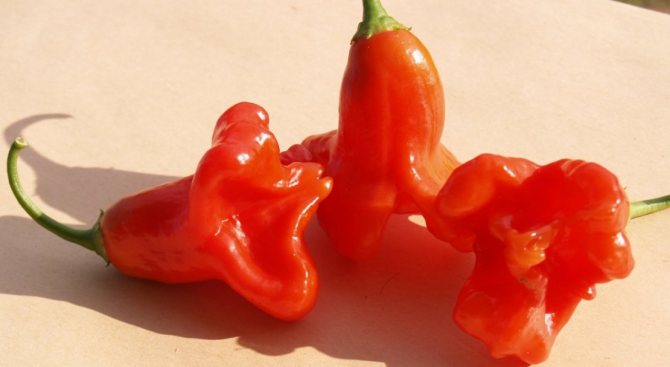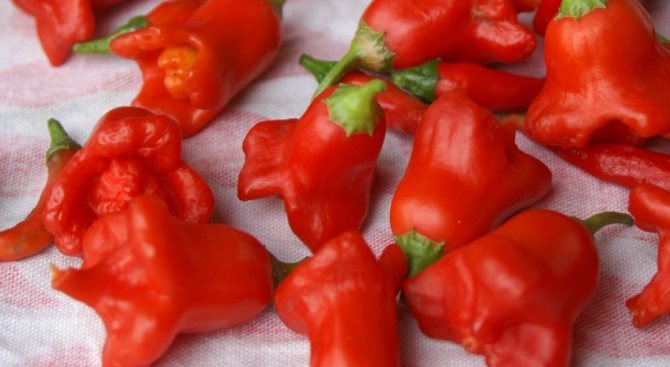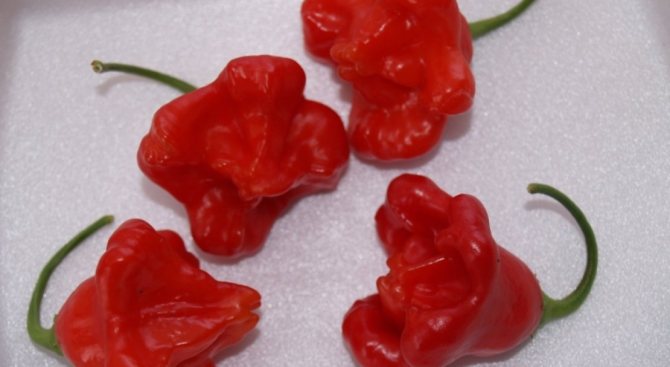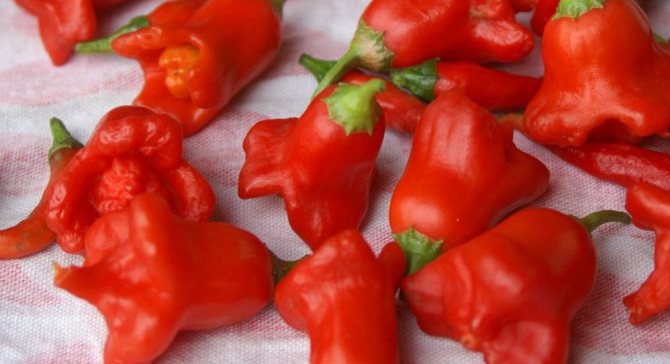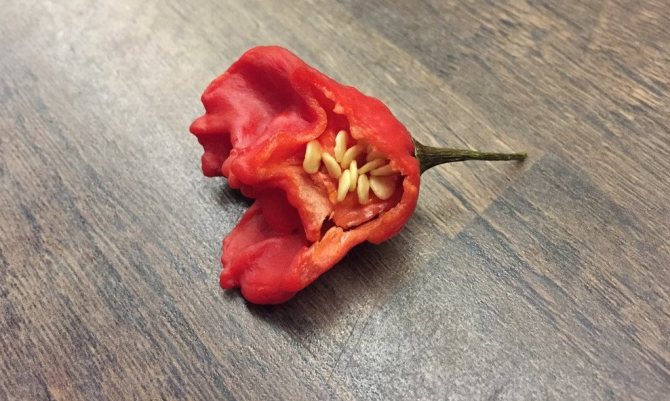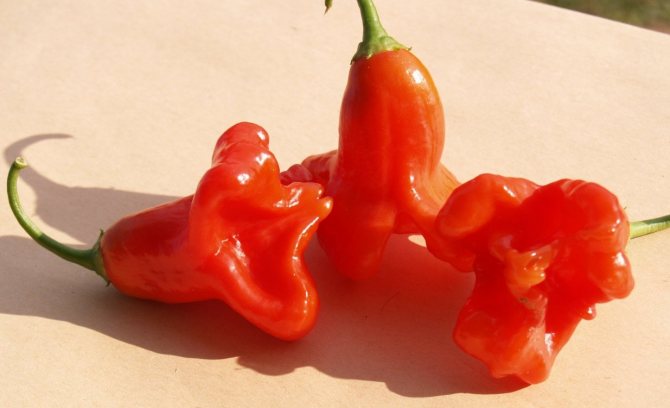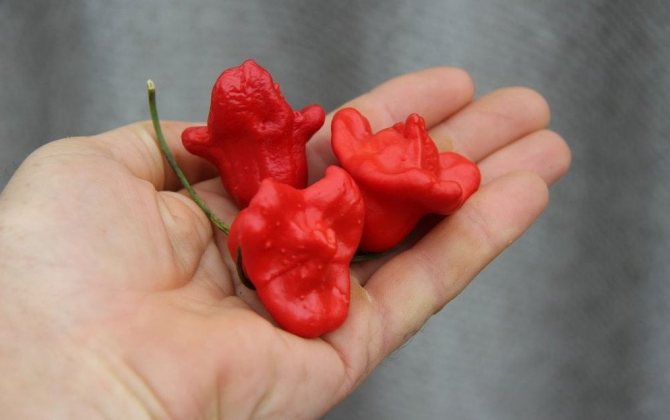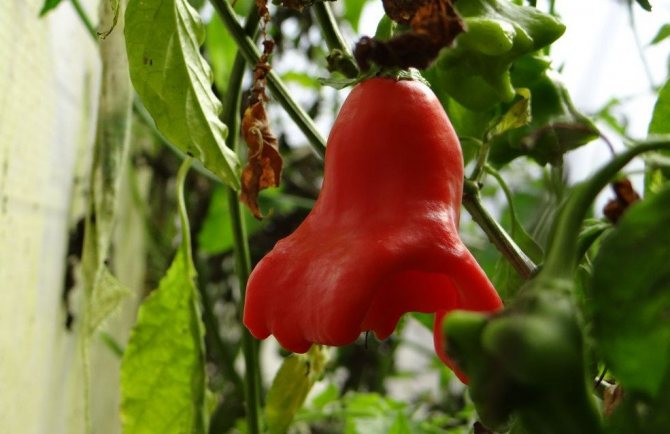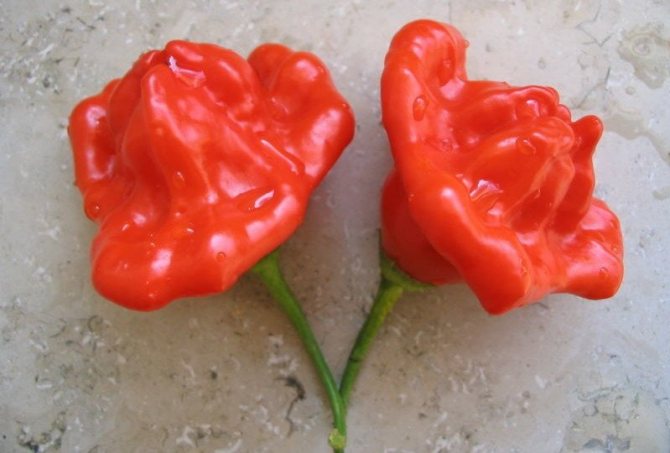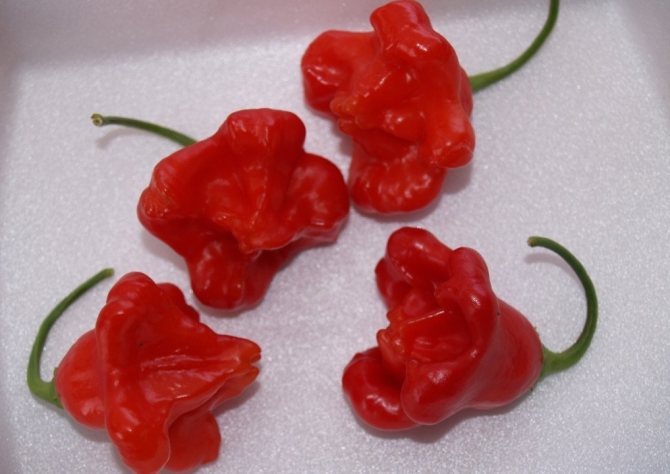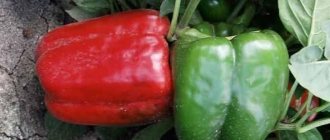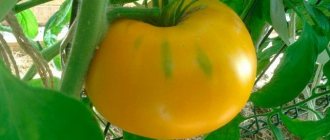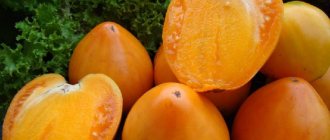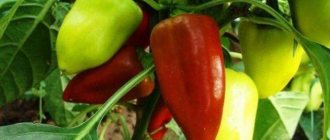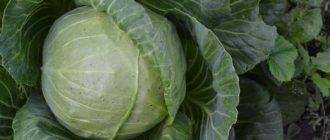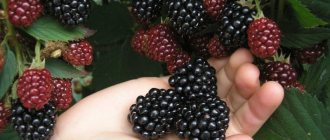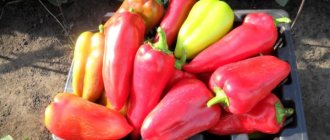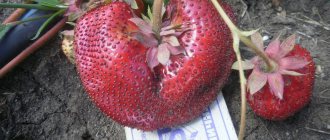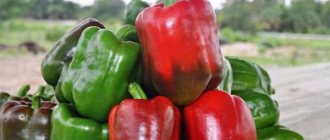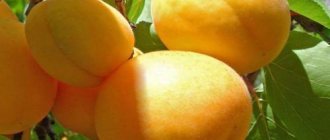Vegetable growing »Pepper
0
1014
Article rating
A large number of varieties of this culture have already been bred. Their differences lie not only in colors, taste, but also in shape. Among the bitter varieties, Bell Pepper deserves special attention. The flower-shaped fruit is its unique characteristic.
Bell pepper
Description
general characteristics
Bell pepper is a rare type of pepper - berry. This variety came to us from South America. Refers to varieties of late ripening. It takes 5 months from planting to harvest. Bushes grow up to 2 meters high. Bell-shaped fruits. Fruit weight up to 50 g. Leaves and stems are slightly pubescent. Each fruit grows separately and forms on a new stalk. The taste of pepper is both bitter and sweet at the same time.
Advantages and disadvantages

The advantages of the variety:
- This variety is a perennial.
- It can be grown on a plot, in a greenhouse, on a balcony.
- For the winter, it can be transplanted into a pot and brought into the house. This will eliminate the need for annual seed rearing.
- Fruits that did not have time to ripen before the cold weather can be added to salads. Ripe red fruits are usually canned.
- Due to its exotic shape, the fruit is at the same time an ornamental plant.
The disadvantages of this variety include:
- Late ripening.
- Predisposition to disease.
- The need to pinch the tops, form bushes.
- The emergence of fruits without seeds.
Description of the appearance of the plant with red, orange and other fruits
Pepper fruit resembles a belland some fruits look like flower buds. The bell peel is smooth and shiny. During ripening on one bush, you can see fruits of green, orange and red colors. It decorates the site with its variety of colors.
Yield
During the season, 1.5 kg of pepper can be harvested from each bush.
Disease and pest resistance
In the Kolokolchik variety, the resistance to diseases and pests is not at the highest level. It is often attacked by aphids and the Colorado potato beetle, and in the process of growth is affected by the "black leg".
Chemical composition
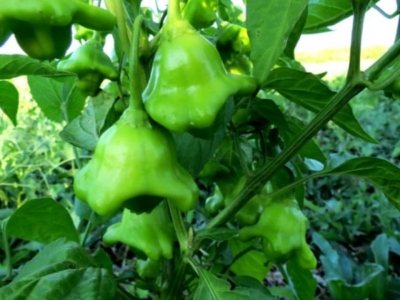

Caloric content is 30 kcal, proteins - 1.5 g, carbohydrates - 7 g.
Vitamins:
- A - 0.4 mg.
- B1 - 0.8 mg.
- B2 - 0.81mg.
- B6 - 0.5 mg.
- B9 - 25 mcg.
- C - 200 mg.
- E - 0.7 mg.
Trace elements:
- iron - 0.9 mg;
- zinc - 0.35 mg;
- copper - 0.15 mg;
- manganese - 0.17 mg.
Macronutrients:
- calcium - 10 mg;
- magnesium - 15 mg;
- sodium - 12 mg;
- potassium - 250 mg;
- phosphorus - 30 mg.
Keeping quality
After harvesting, the pepper wants to be kept fresh for as long as possible. For better keeping quality, fruits are harvested that have already grown to the desired size, but have not yet fully gained color. The flesh of such fruits is dense, juicy, but less fleshy.than a ripe pepper. Only such peppers are suitable for long-term storage.
Marketability
Bell pepper does not lose its presentation during transportation if it was harvested during the technical period of maturity.
Benefit and harm
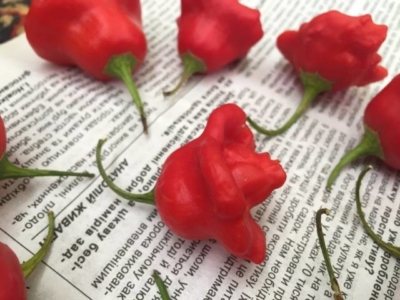

Useful properties of pepper:
- lowers blood cholesterol levels;
- helps to strengthen the cardiovascular system;
- improves brain activity;
- enhances immunity;
- soothes the central nervous system;
- strengthens hair and nail plates.
Harm from use:
- exacerbates inflammatory processes of the gastrointestinal tract;
- irritates the walls of the stomach, can provoke an ulcer;
- worsens the condition of patients with angina pectoris, hypertension.
In which regions are they grown
Grow it in different regions of Russia. Regions located at the latitude of the Moscow region cultivate it only in a greenhouse.
Today red, yellow, green or white bell peppers will surprise no one. The shape of the peppers is also different: from cuboid to elongated, conical. Among all the variety of varieties, Bell pepper stands out favorably, the fruit of which resembles a flower bud. This plant is unique and belongs to the rare group of berry peppers.
You can learn about the properties and characteristics of berry pepper, about its benefits for the human body from this article. It will also tell you how to grow Bell Pepper and how to care for it.
Comparison with other varieties
| Variety / hybrid name | Ripening rate, in days | Taste qualities | Dimensions and weight of the fruit, in centimeters and grams length / weight | Plant height, in centimeters | Productivity, in kilograms per square meter |
| Gift from Moldova | mid-season, maximum 136 | high | up to 10 / up to 110 | 40-50 | 3-5 |
| Bogatyr | mid-season 125-135 | juicy, sweet pulp | no information / up to 140 | 55-60 | 4-7 |
| Ivanhoe | early maturing, from 105 to 135 | tall, sweet | on average 20 / up to 140 | 70 | 6-7 |
| Winnie the Pooh | early ripe, 110 | juicy sweet fruit | 8-11/70 | 20-30 | 2-5 |
| Vanguard | medium early, up to 125 | aromatic and juicy | 15/450 | 25-30 | 17 |
| Kapitoshka | mid-season, from 110 | sweet | on average 6-7 / up to 83 | 45-55 | 21,4 |
| Boatswain | medium early, up to 120 | good | 10-15 / up to 250 | 25-30 | 16 |
| Bourgeois | medium early, up to 120 | good | 10-15 / up to 250 | 25-30 | 16 |
| Orion | mid-season, 127 | sweet | no data / 160 | 60-80 | up to 18.6 |
| Grenadier | mid-season, 120-130 | fragrant pepper | 10-15/550-650 | 25-28 | 18 |
| Pinocchio | ultra-early hybrid, 88-100 | sweet fruit | 10-12/100-120 | high, 70-100 | 7-10 |
| Bell | late ripening 120-150 | Bittersweet | 5 / up to 50 | on average 150-180 | 6-7 |
A brief history of breeding
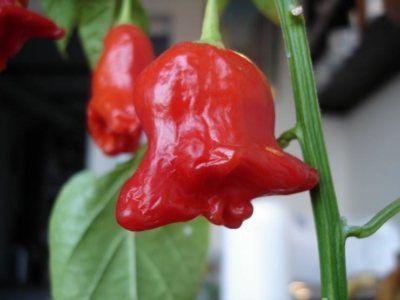

The history of breeding contains conflicting information. According to some reports, this variety was bred at the Research Institute of Vegetable Growing in Protected Ground as an annual plant. According to other producers, it is a hybrid belonging to berry peppers, native to South America.
It is now known that the Kolokolchik variety appeared as a result of crossing bell and bitter peppers... Therefore, in terms of taste, the Kolokolchik variety resembles both original varieties. It combines sweet and bitter taste.
Winter transfer
It is a pity to leave the bell pepper on the street for the winter. Although this plant is perennial. Therefore, in warm climates, it will bear fruit for several years in a row. In those regions where frost occurs in winter, the plant can be transplanted. To do this, you need to prepare a large pot in advance. Pepper is wadded there.
If it is not planned to transfer the plant to heat, it can be left in the ground, having previously covered it. To do this, wait for the plant to shed its leaves. And in the spring, when the frost stops, the pepper will begin to grow again.
Spicy bell peppers are a wonderful decoration of the table, even in summer, even in winter. And thanks to the unpretentious care of the plant, there will be a lot of harvest.
Correct cultivation
How to grow this bitter and sweet variety? The seeds are bought in specialized stores or from the gardeners who grew this variety.
You can learn more about the secrets of growing pepper in the garden and in the greenhouse here.
Seed preparation and planting
Seeds begin to cook in early February:
- First, large seeds are selected and soaked in salted water. Empty seeds will float up after a short time, they are thrown away.
- Then the seeds are disinfected in a weak solution of potassium permanganate for 30 minutes and then dried.
- Before sowing, seeds are germinated on a damp cloth.
- When the seeds "hatch", they are planted in small pots (preferably peat pots).
Bell pepper does not react well to a pick, so it must be planted 1 piece in a pot. You need to plant a shift in light soil of peat and sand to a depth of 3 cm. Pour the soil and cover with foil. Keep in a warm and bright place. A week before transplanting into open ground, the seedlings are gradually accustomed to cooler air.
Planting is carried out when the soil warms up, preferably in the evening. The ground should be loose. The place must be sunny.
- Prepare rows 40 cm apart.
- Pour the well with a weak solution of potassium permanganate and add ash. The depth of the hole is made such that the seedlings deepen to the first leaves. Leave a distance of 30 cm between the plants.
- The soil around is mulched and watered with warm water.
Read more about how to prepare seeds and when to plant peppers for seedlings in a separate article.
Care
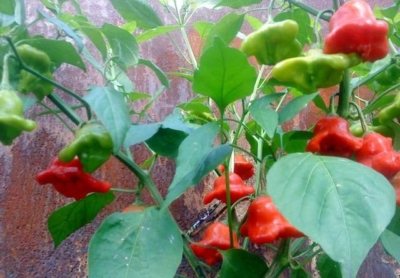

2 weeks after planting, the first mullein feeding can be done. The soil around the seedlings should be loosened regularly. Make sure that the soil does not dry out. When the flowers appear, sprinkle with water with the addition of ash.
After another 2 weeks, fertilize with potassium nitrate. As the bush grows, it is necessary to pinch the weak side shoots, and 3 weeks before harvesting the fruits, you need to remove all unnecessary branches. When the bush begins to gain height, it must be tied up.
Feedback
We bring to your attention several reviews of summer residents about this variety.
Evelina, Krasnodar: “The taste is undoubtedly interesting, but I did not notice a strong pungency. The pulp is rather spicy and sweet. All the pungency is in the seeds. But the kitchen was pleasantly revived when the fruits were ripe ”.
V. Sviridova, Tula: “I came across a description and a photo of this variety on the Internet. I began to look for seeds in stores and did not find it. Had to order from the online store. Of the 15 seeds, 12 sprouted, so she herself distributed it to friends. Pepper bushes are beautiful both during flowering and when fruits are set. Pepper is good fresh and pickled. "
Diseases and pests
Diseases that affect bell peppers include:
- Gray rot. It looks like gray spots on the leaves, which gradually darken and the plant dies. In the initial stages, the affected branches are cut, in advanced cases, the fungicide Gamair is used (10 tablets per 10 liters of water).
- Anthracosis - the plant becomes covered with brown spots and dies. It is recommended to treat with a 1% solution of Bordeaux liquid. For prevention, the land must be constantly loosened.
- Blackleg - a fungal disease in which the stem turns black. Fitosporin-M helps in the fight.
Pests:
- Peppers are often attacked by aphids. For processing, 1 glass of wood ash and a piece of laundry soap are diluted in a bucket, then sprayed. They also do it for prevention.
- The Colorado potato beetle does not like celandine tincture.
- From a spider mite, several bulbs and heads of garlic are insisted in a bucket of water. The tincture is kept for a week and the bush is sprayed.
- To combat slugs, crushed eggshells are scattered around the bushes. The delicate body of the slug does not tolerate the wounding surface of the earth layer.
For the prevention of diseases and pests, it is necessary to regularly carefully examine the plant so as not to miss the onset of the disease and adhere to the correct cultivation technique.
How to increase yields?
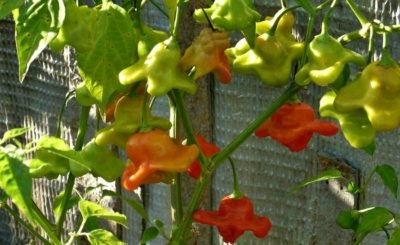

To increase the yield of bell pepper, you need to create favorable growing conditions for it.
- Loosen the soil regularly, prevent it from drying out, water only with warm water and not under the scorching sun to avoid burns on the leaves.
- Do not forget about feeding, it is better to use organic fertilizers.
- To carry out preventive work against diseases and pests, and then the plant will respond with the beauty and generosity of the harvest.
Care
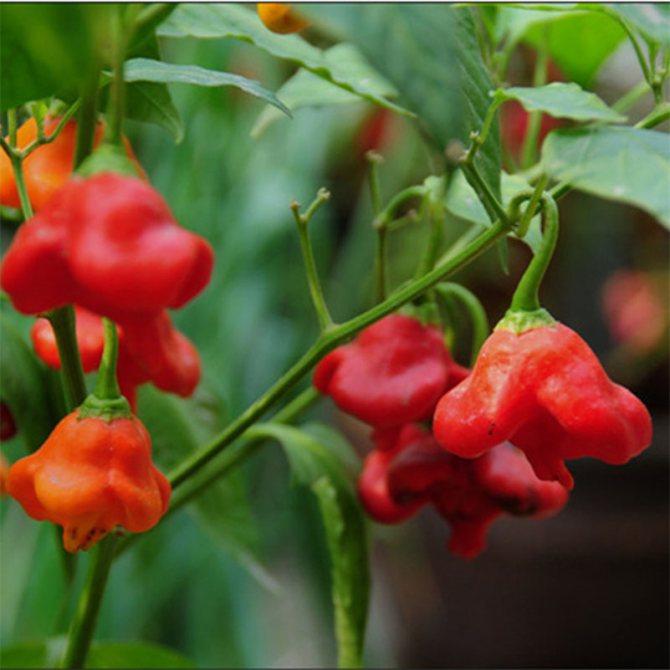

After the pepper seedlings are transplanted into the ground, it is necessary to regularly produce:
- watering with warm water;
- loosening the earth;
- fertilization.
It is necessary to water the ridges daily only during the drought period (optimally, once every three days). The procedure should be performed either early in the morning or in the evening after sunset. Top dressing is recommended for the first time two weeks after transplantation (mullein), the second time - three weeks later (calcium, potassium, wood ash solution).
Pinching of lateral shoots is done after the beginning of flowering. In this case, all branches below the ovaries, as well as stepsons, should be removed.
Collection and storage
Bell pepper is a late-ripening variety. The harvest begins in early autumn. If the fruits are consumed immediately for cooking, then fully ripe peppers are harvested. If you need to store the crop, they are harvested a little unripe. Fruits for storage must be selected not damaged so that they do not start to rot. For the same reason, they are cut with tails.
Peppers can be sweet and juicy, pungent and pungent. On our site you will find articles about the characteristics and growing conditions of such varieties of this plant as Flight, Atlant, Khalifa, Ram's Horn, Gypsy F1, Pompeo, Kakadu, Aristotle F1 and Gemini F1.
Bell pepper combines the properties of sweet and hot bell peppers. Having grown one variety, you can enjoy the taste and beneficial properties of two varieties at once. With its decorative fruits, it will decorate both any culinary dish and the garden area.
The benefits of bell pepper
Useful properties of bell pepper:
- contains vitamin C, which effectively fights colds;
- contains vitamin B, which reduces stress;
- perfectly removes cholesterol;
- improves the condition of the skin and hair;
- helps in concentration;
- perfectly stimulates brain activity;
- improve vision;
- has a beneficial effect on blood vessels and bone tissue.
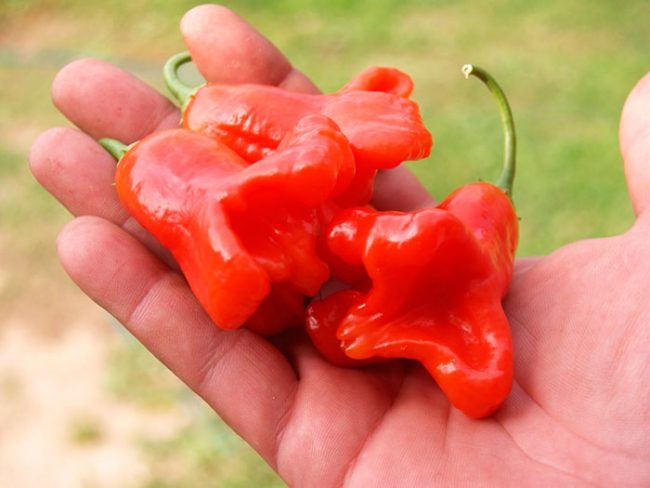

Bell pepper is still an exotic plant for us, but it deserves close attention. After all, he has so many advantages - he gives an excellent harvest, the fruits of a piquant taste have a bright unusual shape. Pepper is great raw, as well as in various preservation. It will decorate any festive table and has a beneficial effect on the body. If you want to add a touch of variety to your summer cottage, then there is no better plant than Bell Pepper.
Read also: Corn: how to feed for growth, fertilization with ammonium nitrate and urea, norms

